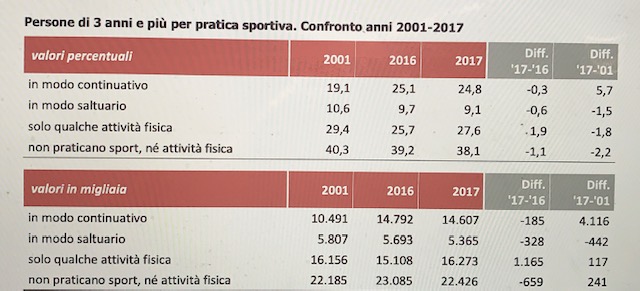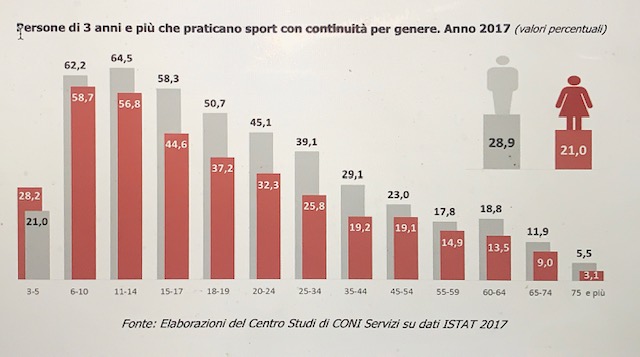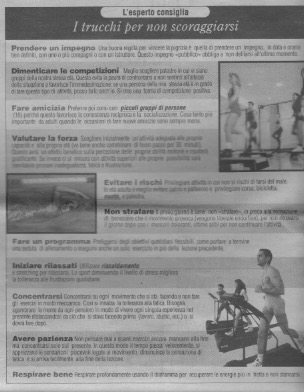Italy: 10 years ago I wrote this blog and I would say that the negative predictions I was making have come true.
This is not a topical issue because it is a constant fact of our daily lives. It is about sport for all. What has been called: sport for everyone. The 80′s and 90′s were those of the increase of active sportsmen and women and the great sports associations reached millions of adherents. It was an incredible success and a great social experience and search for well-being by Italians who had always been a population of sedentary people. Today, however, this drive has been lost, the maximum number of practitioners is in middle school and then decreases steadily: at 20 years old, 40% of girls and 60% of boys do sports, even irregularly; at 30 years old, 30% of women and 50% of men, which at 50 years old are reduced to 20% and 30%.
So what to do?
It is obviously not enough to organize thousands of running races in our cities every Sunday, because this does not increase physical activity. If we don’t want to find ourselves in a few years with a percentage of obese people and growing health problems, it is necessary that those who deal with sports for all get out of the traditional approaches that were so effective more than twenty years ago. We need new ideas, new kinds of collaboration among sports organizations to avoid ending up leading a life divided between home, transportation, school or work, transportation and home. We need to move out of the denunciation phase and into the choice phase.










